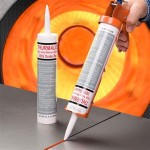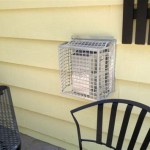How to Build a Stone Veneer Fireplace Surround
A fireplace serves as a focal point in many homes, providing warmth and ambiance. Enhancing its aesthetic with a stone veneer surround can significantly elevate the room's character. This article provides a comprehensive guide on how to build a stone veneer fireplace surround, covering essential steps from planning to installation.
Planning and Preparation
The initial phase of constructing a stone veneer fireplace surround involves meticulous planning and preparation. This stage determines the final outcome and ensures a smooth and efficient installation process. Several critical factors must be considered during this phase.
Measuring the Existing Fireplace: Accurate measurements are crucial for determining the dimensions of the new surround. Measure the height, width, and depth of the existing fireplace opening and any surrounding areas. Pay close attention to the hearth size and its position relative to the fireplace opening. Ensure that the new surround will complement the existing structure without obstructing the fireplace's functionality.
Selecting the Stone Veneer: The choice of stone veneer significantly impacts the overall aesthetic. Consider the color, texture, and style that best suits the room's design. Options range from natural stone veneers to manufactured stone, each offering unique characteristics. Natural stone provides a rustic, authentic look, while manufactured stone offers greater consistency and often a lower cost. Obtain samples and visualize how they will appear in the room's lighting. Factor in the weight of the stone, as this will affect the structural requirements of the surround.
Designing the Surround: Sketching a design of the fireplace surround is essential. This allows for visualizing the final product and identifying any potential issues early on. Incorporate desired features such as a mantel, hearth extension, or decorative elements. Consider the scale of the surround in relation to the room's size. A surround that is too large can overwhelm the space, while one that is too small may appear insignificant. Account for clearances required by local building codes, particularly around the fireplace opening to prevent fire hazards.
Gathering Materials and Tools: Preparing a comprehensive list of materials and tools is paramount. Aside from the chosen stone veneer, you will need cement board, mortar, metal lath, screws, leveling shims, and sealant. Essential tools include a mortar mixer, trowel, notched trowel, level, measuring tape, safety glasses, work gloves, and a wet saw for cutting the stone veneer. Renting specialized equipment, such as a mortar mixer or a wet saw, may be more cost-effective than purchasing it outright, especially for a single project.
Preparing the Surface
Proper surface preparation is vital for ensuring the long-term adhesion and stability of the stone veneer surround. A solid foundation is imperative to prevent cracking, shifting, or detachment of the stone over time. The existing surface must be prepared adequately before applying the mortar and stone.
Cleaning the Existing Surface: Begin by meticulously cleaning the existing fireplace surround. Remove any loose paint, wallpaper, or debris. Use a wire brush or scraper to remove stubborn remnants. If the existing surface is painted or coated, sanding it down to provide a better bonding surface for the mortar is recommended. Ensure the surface is free from dust, grease, or any contaminants that could interfere with adhesion.
Installing Cement Board: Cement board, also known as backer board, provides a stable and moisture-resistant substrate for the stone veneer. Cut the cement board to fit the desired dimensions of the surround. Secure the cement board to the existing surface using screws designed for cement board. Ensure the screws are spaced appropriately to prevent the board from flexing or warping. Overlap the seams slightly and tape them with cement board tape to prevent moisture penetration. The cement board should be level and flush with the surrounding surfaces.
Applying Metal Lath: Metal lath is a wire mesh that provides additional reinforcement and a surface for the mortar to grip onto. Attach the metal lath over the cement board, overlapping seams by several inches. Secure the metal lath using staples or nails designed for this purpose. Ensure the metal lath is taut and free from wrinkles or bulges. This will prevent unevenness in the mortar layer and ensure a strong bond with the stone veneer.
Applying a Scratch Coat: A scratch coat is a thin layer of mortar applied to the metal lath to create a rough surface for the stone veneer to adhere to. Mix the mortar according to the manufacturer's instructions. Apply a thin, even layer of mortar using a trowel, pressing it firmly into the metal lath. Score the surface of the mortar with a notched trowel to create ridges. This provides a textured surface that will enhance the adhesion of the stone veneer. Allow the scratch coat to cure for at least 24-48 hours before proceeding with the stone veneer installation.
Installing the Stone Veneer
The installation of the stone veneer is the most visually impactful stage of the project. Precision and attention to detail are crucial to achieve a professional and aesthetically pleasing result. The following steps outline the process of applying the stone veneer to the prepared surface.
Planning the Layout: Before applying any mortar, dry-fit the stone veneer to determine the layout and pattern. This allows for adjusting the placement of individual stones to achieve the desired look. Consider the size, shape, and color variations of the stones to create a balanced and visually appealing arrangement. Cut stones as needed using a wet saw to fit around corners, edges, or architectural features. Planning the layout beforehand minimizes waste and ensures a cohesive design.
Mixing the Mortar: Proper mortar consistency is essential for a strong and durable bond. Mix the mortar according to the manufacturer's instructions, using a mortar mixer or a mixing bucket and drill with a mixing attachment. Add water gradually to achieve a thick, pasty consistency similar to peanut butter. Avoid adding too much water, as this can weaken the mortar. Allow the mortar to slake for a few minutes after mixing to allow the cement to fully hydrate. Remix the mortar before use to ensure it remains workable.
Applying the Mortar to the Stones: Using a trowel, apply a generous layer of mortar to the back of each stone veneer. Ensure the mortar covers the entire surface to maximize adhesion. The thickness of the mortar layer will depend on the size and shape of the stone, but generally, it should be about 1/2 to 3/4 inch thick. Create a slight bevel at the edges of the mortar to prevent it from squeezing out excessively when the stone is pressed against the surface.
Placing the Stones: Carefully place each stone onto the scratch coat, pressing it firmly into place and wiggling it slightly to ensure good contact with the mortar. Start at the bottom and work your way up, maintaining consistent joint widths between the stones. Use leveling shims as needed to ensure the stones are level and aligned. The joints between the stones can be left open for a rustic look or filled with mortar for a more refined appearance. Remove any excess mortar that squeezes out from the joints with a small trowel or putty knife.
Grouting the Joints (Optional): If desired, grout the joints between the stones after the mortar has partially cured. Use a grout bag or a small trowel to apply the grout to the joints, filling them completely. Allow the grout to set for a few minutes, then use a damp sponge to wipe away excess grout from the surface of the stones. Take care not to remove too much grout from the joints. A slightly recessed joint is generally preferred for stone veneer applications. Allow the grout to cure completely before sealing the surface.
Sealing the Stone Veneer: Applying a sealant to the stone veneer can protect it from moisture, staining, and weathering. Choose a sealant specifically designed for stone veneer applications. Apply the sealant according to the manufacturer's instructions using a brush, roller, or sprayer. Ensure the surface is clean and dry before applying the sealant. Allow the sealant to cure completely before exposing the surround to moisture or use.

Thin Stone Veneers Make A Fireplace Update Easy Swenson Granite 100 Natural Stones

How To Install A Stone Veneer Fireplace Shoe Makes New

Mary S Diy Stone Veneer Fireplace Surround Genstone

Tips On How To Build A Stone Fireplace Horizon

How To Build And Hang A Mantel On Stone Fireplace Shanty 2 Chic

A Step By Diy Stone Veneer Installation On Fireplace In Only 4 Days This Customer To Faux Fireplaces Designs

Transform Your Home Stone Veneer Over Brick Fireplace Guide

Stone Veneer Fireplace Ideas That Will Warm Up Your Home Ply Gem

How To Install Faux Stone Veneer Lowe S

Installing Stone Veneer Fireplace How To Install Around








